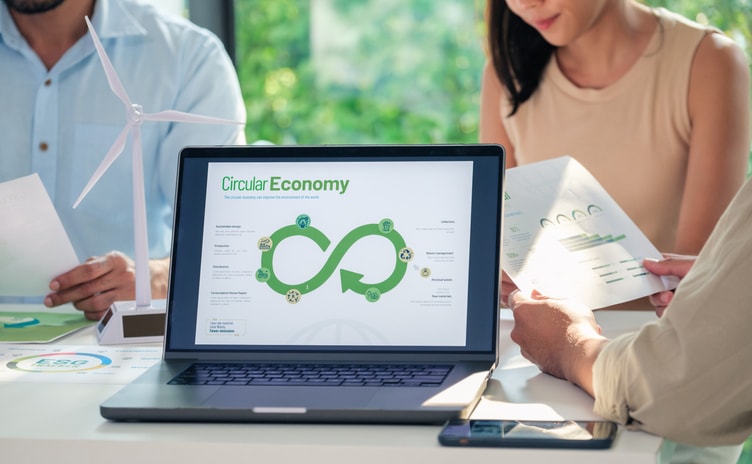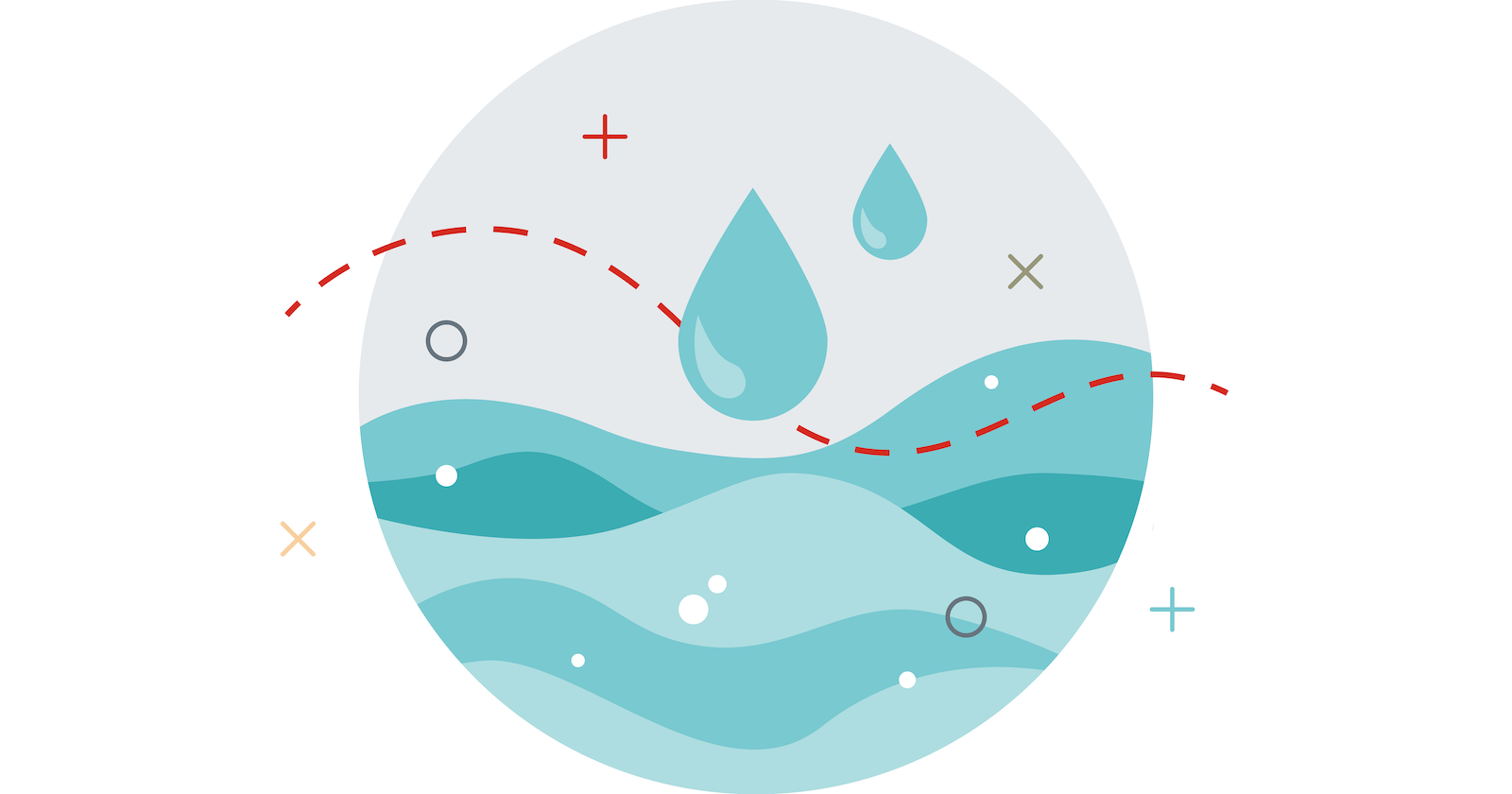Thursday, March 6, 2025
Cutting-edge technologies can process vast amounts of data to identify patterns and enhance the efficient use of materials, energy and water
By Miguel Ángel García Vega
The circular economy debate is gaining strength. If this text were an Excel spreadsheet instead of a journalistic article, there would be “debit” and “credit” cells on it. A report by the McKinsey consulting (What is Circularity?) estimates that by 2050, the circular economy could represent a $1 trillion business opportunity for Europe. A landscape of expanding possibilities, sharp and powerful like a lion’s teeth. By 2030, the European circular electronics market is projected to grow to €65–90 billion, driven primarily by the increasing demand for remanufactured products. Another cell. The home and living sector, projected to be worth €45 billion by 2030, will be largely shaped by furniture crafted from certified wood. Meanwhile, the essential plastics industry faces a high-stakes challenge—it will need a $100 billion (€96 billion) investment to hit its target of incorporating 20% to 30% recycled materials. On the “debit” side, the Goldman Sachs investment bank adds a sobering data point to the equation. Only 10% of the planet's economy is circular. Despite everything, Europe has reached 11.5%. Almost unexpectedly, cutting-edge technologies (such as generative artificial intelligence) have emerged, offering the potential to shape this economy into a perfect sphere, one that experts now label “2.0.” Because if the world genuinely needs saving (as climate change makes increasingly clear) then society and governments must push companies to deliver solutions like clean energy and circular economy practices.
In the diverse world of academia, at least 67 research papers champion the role of AI in shaping this circular model. Let's think, for example, about the famous supply chain. “This technology can be used to improve inventory management,” reflects Cecilia Elizondo, member of Ganesan (the United Nations agency responsible for evaluating science and its relationship with food security), “predict demands, perfect logistical routes, and reduce waste.” The possibilities within the global food sector unfold like a cascading chain of innovations. It plays a key role in developing sustainable materials, detecting pests, analyzing real-time data (big data), optimizing crops, extending machinery lifespan, improving waste sorting and recycling and enhancing decision-making processes. “To add to that, tools such as chatbots and blockchains can support by informing and facilitating citizen participation in sustainable practices,” Elizondo explains. It is in the renowned blockchain technology that Carmen Jaca, a professor in the Department of Industrial Organization at the University of Navarra, sees true disruption. “It will transform the traceability and certification of recycled materials, guaranteeing transparency in supply chains and facilitating safe and efficient reuse markets,” she suggests.
Charting its course, this economy is still searching for its perfect circle. It also represents a unique change of mentality. Until now, productivity has equaled prosperity. It defined living standards, wages, and even the survival or failure of businesses. Now, in a move that defies conventional thinking, the focus is shifting toward a strategy of producing less. Japanese philosopher, Kohei Saito (38 years old), is a global phenomenon. His books have sold over 500,000 copies. In his latest work, Slow Down: How Degrowth Can Save the Earth (not yet available in Spanish), Saito introduces the concept of “degrowth.” “It's not some abstract utopia,” he told El País. "It aims to radically change the basic objective of the system in which we work and live: from profit to well-being and care." With this perspective, the circular economy is built on producing less but producing better. According to McKinsey, the world simply can't afford to discard 2.6 trillion dollars (€2.5 trillion euros) worth of consumer goods every year.
Cutting-edge technologies are a great hope. Let’s take a closer look at one of the key pillars of this new economy: reverse logistics. This system enables the return of defective products and materials for reuse, recycling, or remanufacturing, significantly reducing waste and pollution. AI optimizes this chain of words. How? By identifying faulty items or improving planning and control of the flows. In academic circles, the 2.0 version of the circular economy is gaining strong support. Julio Andrés Silva Aragón, a systems engineering professor at the National Open and Distance University of Bogotá (Colombia), highlights in multiple studies how this technology can process and endless amount of data (as we've seen) to identify patterns, optimize the use of materials, energy, and water, reduce waste as well as drive efficiency. It's possible to design durable, repairable and recyclable items. In practice, it can help close the circle of material life cycle and automate and improve classification and recycling of waste. In other words, “to transform”—rarely has an infinitive carried so much weight—what was once seen as waste into valuable resources.
AI is more than just a powerful tool for supporting the circular economy—it’s a key driver in the transition to a more sustainable economic model across all industries. It also helps break away from the long-standing mindset inherited from the Industrial Revolution, where the production cycle followed a simple yet unsustainable pattern: “take, make, discard.” “Many argue that the circular economy is not the be-all and end-all.” But placing it in the center not only requires innovation, but also a profound cultural change in the way we perceive value and ownership," emphasizes Jack Dempsey, funds manager at Schroders. For every success story, challenges also arise: logistical hurdles, economic disparities, and regulatory barriers that must be overcome. At its core, this entire discussion revolves around challenges deeply rooted in society itself, highlighting both the significance of the issue and its fundamentally social nature. Taking it a step further, this economy also reinforces democratic values, as technology helps make products and services more accessible across all social classes. “Democracy is valuable in itself—not because it necessarily drives growth, but because it respects the process by which it is achieved,” is a reminder by Kenneth Rogoff, former chief economist of the International Monetary Fund (IMF) and professor of Economics at Harvard University. One example is the growing wave of regulations promoting circularity, not just in Europe—where it leads the way—but also across Latin America, Africa, and Asia. For 400,000 generations, humans have lived on Earth, but only now, with the precision of cutting-edge technology, do they truly grasp the value of the circle and know how to draw it.
Miguel Ángel García Vega
He has been writing for EL PAÍS for some 25 years, currently for Cultura, Negocios, El País Semanal, Retina, Suplementos Especiales, and Ideas. His texts have been republished by La Nación (Argentina), La Tercera (Chile) or Le Monde (France). He has received, among others, the AECOC, Accenture, Antonio Moreno Espejo (CNMV) and Ciudad de Badajoz awards.
¿Te ha parecido interesante?





